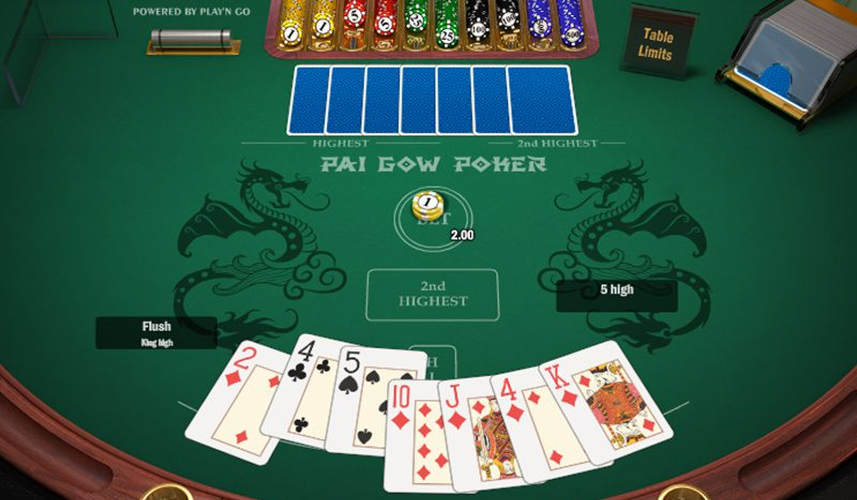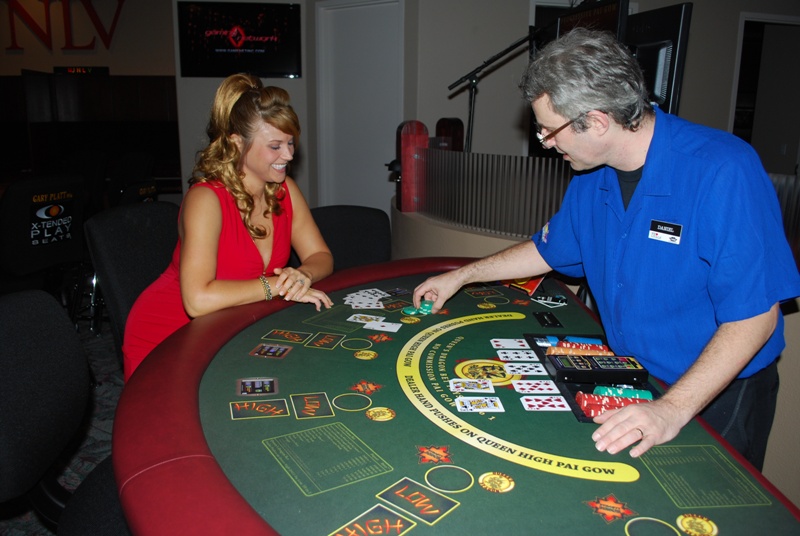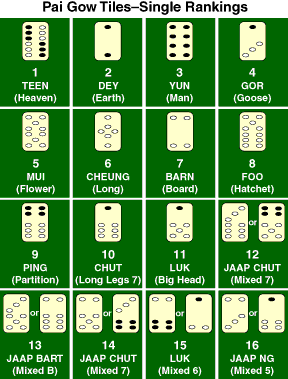Pigow
Immerse yourself in a fusion of ancient Chinese Pai Gow combined with classic American poker. The game is played with a traditional deck of 52 cards plus one joker –used as an Ace, or to complete a straight or a flush. Choose to play against the banker, or be the banker. This game features the optional Fortune Bonus bet with. Pai gow poker If you're looking for a slower-paced game than Craps or even Blackjack and want to spend a lot of time gambling without losing an outrageous amount of money, play Pai Gow Poker. Once you comprehend the basics of poker (see Hand Rankings, below), you'll feel comfortable with this version and be able to relax. The Game Pai Gow Poker is a playing-card variation of the traditional Pai Gow Chinese gambling game (which is played using dominoes). Players create two poker hands—a five-card hand and a two-card hand—out of the seven cards each is dealt—with the ultimate goal of defeating the dealer’s two corresponding hands.
This is a casino gambling game based on the Chinese Domino game Pai Gow but played with playing-cards and poker combinations instead of with dominoes. It can be played by up to seven players.
A pack of 52 cards plus one joker is used. The joker is a wild card which can be used only as an ace, or to complete a straight, a flush or a straight flush.
Created by an American casino owner (Sam Torosian) in the mid-1980s (without patenting it, unfortunately), Pai Gow has taken hold as a casino staple and is still going strong 30 years later. In simple terms your goal is to make two poker hands – one 5-card hand and one 2-card hand. Pai Gow is a poker variant played against the dealer. The aim is to make a five-card and a two-card poker hand out of the seven cards you are dealt, with.

On each deal the dealer plays against the other players. Before the deal, each of the other players puts up a stake.
Seven cards are dealt to each player. All players other than the dealer look at their cards and divide them to form two hands - a two card hand and a five card hand. The relative values of the five card hands are the same as in poker, with one exception: A-2-3-4-5 is the second highest type of straight or straight flush, ranking between A-K-Q-J-10 and K-Q-J-10-9. Five aces is the highest hand, beating a straight flush. For the two card hand, any pair beats any two unmatched cards, but no other combinations are possible.
The player must arrange the cards so that the five card hand is higher than the two card hand (so if the two cards were a pair of aces, the five card hand would have to contain two pairs or better). Players are not allowed to discuss their hands at any stage.
The players place their two hands face down, and when all are ready, the dealer's seven cards are exposed. The other players may not touch their cards from this point on. The dealer forms the seven exposed cards into a five and a two in the same way as the players.

Then all the players' cards are exposed. The result between the dealer and each player is determined by comparing the player's 5 card hand with the dealer's 5 card hand and the player's 2 card hand with the dealer's 2 card hand:
- If the player wins both hands the dealer pays out the amount staked by the player.
- If the dealer wins one hand and the player wins the other no money changes hands. This is called a 'push'.
- If the dealer wins both hands the dealer wins the player's stake.

If either hand is tied, the dealer wins that particular hand. So if the dealer wins one hand while the other is tied, or if both hands are tied, the dealer wins. If one hand is tied and the player wins the other it is a push (no money changes hands).
- Note on the deal
- When this game is played formally, a rather elaborate method of dealing is used. Seven hands of seven cards are dealt, one card at a time, and the remaining four cards are discarded unseen. The dealer then throws three dice and counts around the players at the table counter-clockwise, starting with himself, up to the dice total to determine who gets the first hand which was dealt. The following hands go to the other players, in counter-clockwise rotation.
- Dealer's advantage
- The dealer obviously has an advantage (winning tied hands), so if you want the game to be fair everyone has to deal an equal number of times during the session.
For another description, see the Pai Gow Poker FAQ of the newsgroup rec.gambling.misc
The Pai Gow Poker at The Pogg has rules, analysis and a strategy calculator.
The Casino-info.com site has a page of Pai Gow Poker rules and strategy.
Pai Gow Poker Free has information on Pai Gow Poker rules, strategy and odds and a selection of places where you carn play online for fun.
The Pai Gow Poker section of the Casino Advisor web site has Pai Gow Poker rules and advice.
Many of you have played Pai Gow Poker at the best online casinos, but are you playing with a proper strategy? Despite the claim that Pai Gow Poker is a game of luck, there are strategies that you can use to improve your odds of winning.
Today, we will look at the basic strategy for playing your hands in Pai Gow Poker. Note that this strategy is based on you playing your hands as the player. It does not account for live Pai Gow games where you can play as the banker.
Picowords Answers
Playing Uncordinated Hands
There are going to be many times where you will receive a hand that’s completely uncoordinated. With these hands, you don’t have as much as a pair for either hand. When this happens, you have to play two high card hands and hope that the dealer has a bad low hand.
First, you will take your highest card and add your four lowest cards together. This is your high hand. You’ll take your second and third highest cards to make your low hand. For example, if you have A-K-J-9-7-5-2, you’d play A-9-7-5-2 for high and K-J for low.
One Pair Hands
Another common hand is where you only have a single pair and nothing else in your hand. In this case, the pair will be your high hand. Take your two highest kickers and play them as your low hand. For example, if you have A-Q-10-8-8-6-2, you’d play A-Q for low and 8-8-10-6-2 for high.
One pair hands are scoop capable when you have a medium pair and at least one card of queen or higher in your low hand.
Two Pair Hands
The hands that will be the trickiest to play in Pai Gow Poker are hands with two pair. That’s because you’re often going to split your pair. Splitting pairs is where most people get tripped up in this game.
Pig Owl In Harry Potter
First, let’s look at the three types of pairs. Low pairs are deuces through sixes. Medium pairs are sevens through tens. High pairs are jacks or better.
Here are the times where you will be splitting two pair, regardless of what your other cards are:
- Anytime one of your two pairs is aces.
- When you have two high pair.
- When you have one medium and one high pair.
In the following scenarios, you will also split two pair provided you do not have an ace in your hand:
- One low pair and one high pair.
- One Low pair and one medium pair.
- Two low pairs.
- Two medium pairs.
In all other cases where you have two pair and an ace in your hand, you will play your ace and the second-highest non-pairing card as your low hand and the two pair for high.
Playing Trips in Pai Gow Poker
Playing trips, aka three of a kind, is easy in this game. In most cases, you will play trips for your high hand and your two highest kickers for the low hand. The only exception is when you have trip aces. In this case, you will split the trips and play one ace as part of your low hand.
Flushes and Straights
Hands with a straight or flush are usually going to play themselves. In the majority of cases, you’ll play the straight or flush as the high hand. For the times where you have a seven-card straight or a seven-card flush, you will play the two highest cards as your low hand.
The one exception for playing a flush is when you have a flush along with two pair. When this happens, you’re going to break the flush and split the pair according to the rules for splitting pairs.
Quads
You might be tempted to automatically play quads (four of a kind) as a high hand, but that’s not the case. When you have quad jacks or better, you’re splitting the hand into two pair. The same applies to medium quads, provided that you don’t have an ace in your hand. If you do, you will play the quads. For low quads, you will play them together.
Five Aces
As counterintuitive as it sounds, you’re almost never going to play five aces together. Instead, one ace and the joker will become your low hand and you’ll play trip aces for high.
The exception to this rule is when you have a pair of kings and five aces. Then, you’ll play the kings for low and five aces for high.
This Strategy Helps, But Not By Much
The above strategy is a great strategy to use to help improve your odds at winning in games where the dealer is always the banker. This applies to most Pai Gow Poker games at real money online casinos. However, the edge you gain with this strategy isn’t massive. It only improves your odds by about 0.21%. The general house edge when using this strategy is around 2.5%
Pai Gow Poker
Where this strategy helps is in games where the player is the banker. In those games, the house edge is reduced down to less than a half of a percent. However, you will find few online Pai Gow games offering player banking. However, it is still great to know when you play in live Pai Gow Poker games.